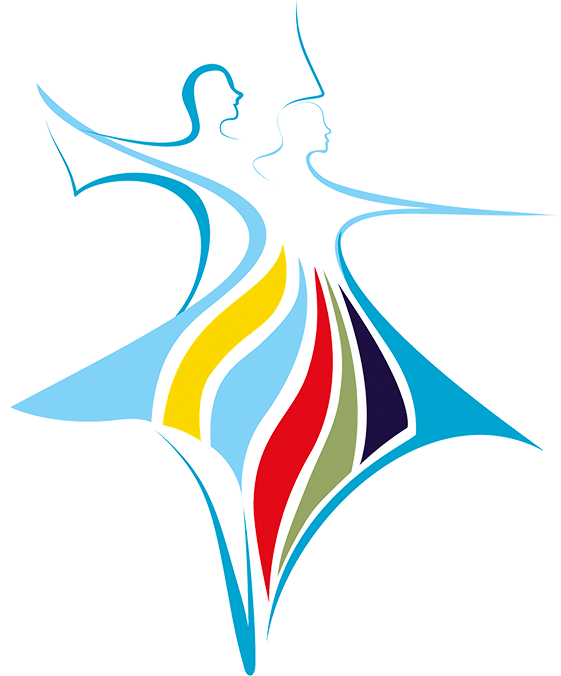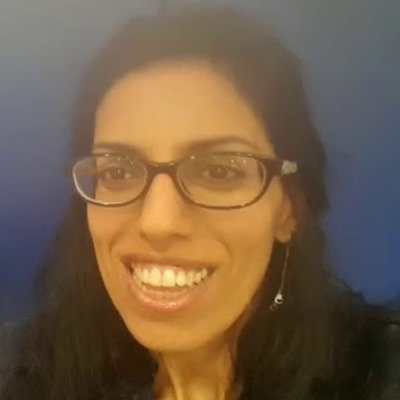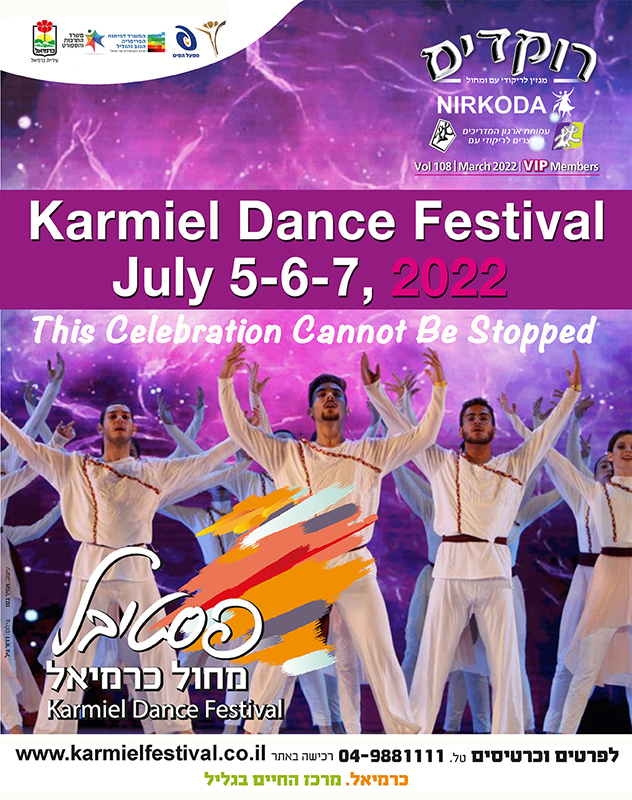- Home
- Rokdim Nirkoda 108
- Yoav’s Archives
Anyone who participates in folk dance groups, attends the Karmiel Dance Festivals, sings the songs and doesn’t miss a dance session is a person who loves folk dancing very much. He might love this activity so much that he even takes a course for folk dance instructors. However, there are people who love this field to the very fiber of their being and are totally dedicated to it. This describes Yoav Sidi whom I met at Kibbutz Kfar Hamaccabi. Yoav has several hobbies: chess, mind games, sports and music. He plays recorders, the flute, the accordion, piano, saxophone and clarinet and more. But his most beloved hobby eventually became his profession: folk dance.
His love for the field of folk dance started when Yoav was very young and in the Tzofim – the Scout youth movement. One of the youth movement activities was Israeli folk dancing. Along with all the youth movement people, Yoav went to the popular dance sessions led by Bentzi Tiram at Migrash Oranim. Later, he started dancing as part of his studies at Wingate Institute as a physical education teacher. He studied for two years at the Ulpan Madrichim LeRikudei Am (course for folk dance instructors) in Haifa then at Seminar Hakibbutzim and at the course for instructors of international folk dance in Jerusalem.
Yoav’s love for this field and his curiosity intensified through the years and he began collecting items connected to folk dance. I found archival materials – photographs, cassette tapes, reels, 8mm films, hundreds (maybe thousands) of records, pamphlets of instructions for dances, shelves filled with books about folk dance written in Hebrew, Russian, German, instruction books with illustrations for teaching the steps, various musical instruments, a collection of shepherd’s flutes (chalilim), sound equipment, video tapes and discs of folk dances, the tape used by Yankale Ziv when he taught, a pipe/recorder made by Eliyahu Gamliel that he took with him on hikes and turned into a flute, Leah Bergstein’s tapes and many others that we saw in the past. In short, a truly rare collection. Things that need to be in a museum.
These are the physical findings. But together with this, Yoav also has a computerized archive of Israeli folk dances that were choreographed in the 1950s, including the song, who performed it, a picture of the choreographer, various performances and video clips of dance troupes. The computerized archive unified the many catalogs (David Edery, Rokdim website, Australian website, the Histadrut Workers Committee and more) into one catalog. He corrected things that were correct in books but were incorrect in the catalogs. He went through all the record albums and added those songs that were missing in the catalogs that he found on recordings. This was the work of many hours, of digging, adjusting, gathering, and carefully searching for origins on the Internet and in books.
Where did the idea to preserve Israeli folk dances come from?
During the work I was doing in the field, I discovered dances that had disappeared and have no documentation. I realized that what now exists needs to be preserved before it disappears as well and the songs and dances that that have been pushed into a corner could still be documented.
It’s also a matter of personality. I have the characteristics of an archivist. I organize. I started by collecting recordings long before I had a phonograph. I have a collection of various musical instruments as well as a giant collection of musical notations and books of Israeli songs. For me, Israeli folk dancing is a hobby I have been nurturing, and my collections have become part of it.
What is Folk Dance?
Yoav explains to me that the folk dances of today – the large harkadot (dance sessions) – are not folk dances at all, and he calls them “recreational dances”. According to the academic definition of folk dance, Israel does not have any folk dances. For authentic folk dances, the creator must be anonymous and the dance must continue without change from generation to generation (as it is in world folklore where culture is transferred naturally from father to son).
Here [in Israel] we can find a small number of such examples, Yoav explains, like Sherele, Simi Yadech, Cherkassiya, where the choreographers are unknown. But in most cases, the names of the choreographers are known and therefore the condition of anonymity doesn’t exist. Since we want to have folk dances, just like every other nation, we have artificially created them. A folk dance must somehow symbolize the character of a people or the era in which the dance was created. It needs to have some added value in addition to its entertainment and the number of steps involved.
Israeli folk dance does have some characteristics that could help define it, such as: it is danced to the music of an Israeli folk song and, it is suitable for everyone, that is, one doesn’t need to be a professional dancer in order to learn it. People will spontaneously start to dance it at all kinds of events without a professional dance instructor. The dance is danced based on the composition of the song and not during musical transitions. It can be accompanied by live music or singing.
Israeli and international folk dances were created for festivals, ceremonies, weddings and funerals and not for recreational purposes, as they are used here. The founders of the Israeli folk dance movement created dances so that we would be like other nations and not in order to become famous and be given the title of “choreographer”. Today in Israel, dances are created for entertainment. They change very often and are replaced by new ones.
Genuine folk dances are danced holding hands! It’s a natural instinct to hold hands even if it isn’t specifically mentioned. Hands have enormous strength, the power of “togetherness”, the extraordinary power of being part of a group. In addition to being part of the choreography that should be passed on to future generations, the holding of hands differentiates between the recreational dances with no hands held and international dances that connect and unite.
Examples of genuine folk dances: Nigun Atik, Mayim Mayim, Lo Ahavti Dai, Hora Medura, Tzadik K’tamar…
We’re in the warehouse and he suddenly pulls out a book by Ze’ev Havatzelet, “Mecholeinu Li Ve’Lach – Our Dances for You and Me”. He shows me that throughout the book the author wrestles with what folk dance is. In the past, people who dealt with this, like Shalom Hermon or Rivka Shturman, who searched for the language of Israeli folk dance, as well as Ze’ev Havatzelet, who researched the field, saw the importance of the values and significance of folk dance culture.
Researching the Songs
Yoav branded himself as very knowledgeable about the dances, the songs and their origins. The history of the songs interested him as did the words of the songs and the composers. He tells me that Debka Dal’una is actually composed of two songs, the first being “Dal’una” and the second being “Al Yadil”. This song also has Hebrew words within which the name of the Arab tune is hidden.
Misirlou is an international folk dance with origins in the United States. The song itself has thousands of versions (Arabic, Turkish, Yiddish, Egyptian and others), and each one claims that it is the original. The Greek dance that we do to the melody of the song Etz HaRimon is actually Misirlou. The Misirlou tune became famous by being used in several films. And Etz HaRimon is originally a Bucharan dance, not Israeli at all. Zemer Lach is a Bulgarian song and Simlatech Hashezura is a Russian song that couldn’t be choreographed as an Israeli folk dance because it’s not an Israeli folk song. But this is what has actually happened.
How do you preserve Israeli Folk Dance?
As one who loves folk dance but not recreational dance, Yoav instructs two Israeli folk dance groups (chugim). The goal of the first one is to document and to preserve dances. This group learns and dances special dances that are no longer part of the current regular folk dance session repertoire. This group is by invitation only and is free of charge. The members of the group also participate in filmed sessions and perform in various productions at the Karmiel Dance Festival. The second group is based on dances from the first generation and international folk dances. People come to Yoav’s groups from all over – Haifa, the Krayot, Timrat, Givat Ela, Karmiel, Nahariya, etc. In addition, Yoav thinks that a lot more needs to be done so that folk dance, by definition, will remain in our consciousness. First, a department should be founded within the Ministry of Education that would handle this. And second, there should be dance instructors who teach Israeli folk dance in the schools.
In addition, within the framework of the instructor training course at the Gordon College in Haifa, where Yoav teaches together with Lior Cohen, he passes on some of his knowledge to his students: stories about the dances, various recordings such as “Niguno Shel Yossi” – no one knows that this tune actually has lyrics.
The way to preserve what are by definition folk dances is through holiday ceremonies at the kibbutzim, where there are still traditional dance ceremonies every year for Chag HaMayim and for Chag HaOmer.
The Vision
Yoav is not only a collector who documents, catalogs and computerizes. He is also a dreamer. He has a vision about how to pass on the knowledge and culture to the next generation: “I would like to create a home where it would be possible to gather all the materials related to folk dance (including folk dance on stage) that can be displayed in one place: cassettes, discs, recordings, books, photographs, films, costumes, posters, equipment that went through various transformations over the years, musical instruments, etc. To this place, which would be a Folk Dance House, school children would come, and through lectures, workshops, and other activities, they would learn about the culture that was created here. This house would also have an archive and a museum with changing displays as well as halls large enough to accommodate activities of dance troupes, dance sessions, dance workshops and more.”
This place would work together with other with other institutions that have material about folk dance such as the National Library, Beit Ariela, Zemreshet, the Yonatan Karmon Archives, “Rokdim” and others. The building is already in the advanced planning stages and soon it will be possible to begin the practical work.
Yoav dreams of a museum that would be active in the folk dance culture which has been dwindling through the years along with the advent of the Coronavirus. I wish him the fulfillment of his dream, for the betterment of us all.









Comments
התראות